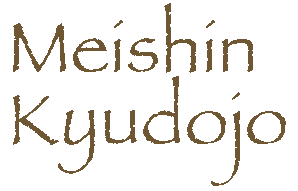
 |
|||
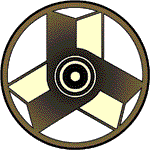
Kyudo Equipment

A Japanese bow is drawn to a greater length than its Western counterpart. As a result Japanese arrows (Ya) are also considerably longer than Western arrows. Traditionally, the shafts were made of a specific variety of bamboo (yadake) and fletched with feathers from both the left and right wings of larger birds of prey. And while bamboo arrows are still preferred, the fletching most used today comes from turkey, swan or other commercially available birds. In addition, more durable aluminum shafts have become a popular choice with high schools or other clubs that have a large percentage of novice practitioners. Because Japanese arrows use fletching from both wings the feathers naturally curve to the left or right. Arrows with feathers that curve to the left are called haya, or first arrows. Those with feathers that curve to the right are called otoya, or second arrows. They are traditionally used in pairs. The haya rotates clockwise in flight, the otoya rotates counter-clockwise.
 |
||
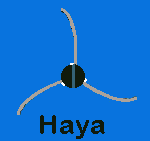
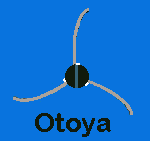



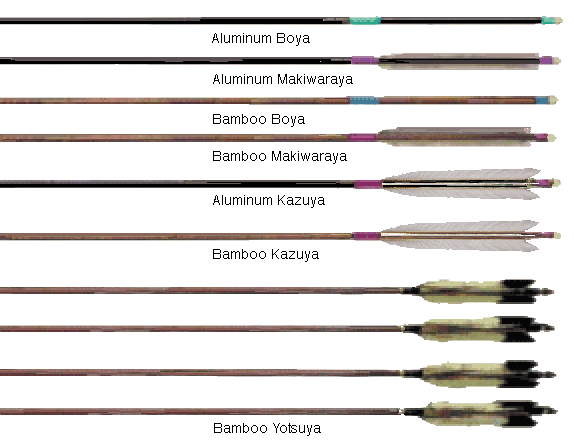
There are a few types of arrows used in Japanese archery:
Boya (close range fletchless practice arrow). Makiwaraya (close range fletched practice arrow).
Kazuya (target distance practice arrow). Yotsuya (target distance 4 arrow matched set).
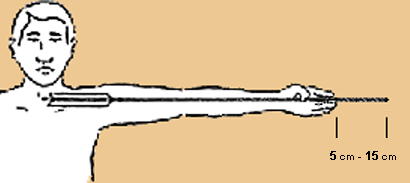
Bamboo ya can be damaged by excessively dry conditions. They can be protected somewhat by rubbing them periodically with a light, high quality oil. Walnut and camellia oils are preferred. The feathers can be lightly steamed back into shape but care should be taken not to loosen the binding agents that hold the feathers in place. In damp conditions the metal points may rust if they are not used regularly. Such rust can be removed with a fine-grade sandpaper. Broken arrows can be repaired by a skilled arrow maker, but for the standard arrows used by most novices the expense of the repairs often outweighs the cost of the arrows.
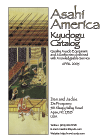
| This site is maintained by Dan and Jackie DeProspero, co-authors with their teacher, Hideharu Onuma Hanshi, of the books Kyudo: The Essence and Practice of Japanese Archery and Illuminated Spirit: Conversations with a Kyudo Master http://www.kyudo.com.html—Revised April 2, 2012 Copyright © 1998 Dan and Jackie DeProspero |
||